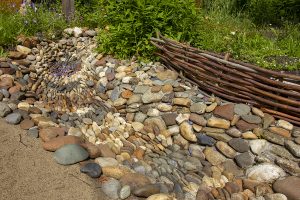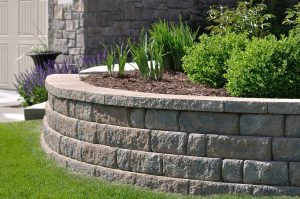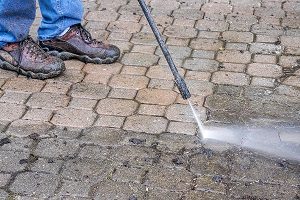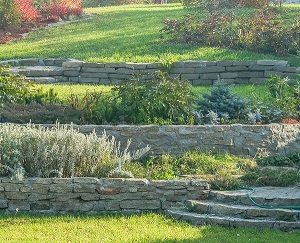
Is your yard a swamp? Do the soles of your shoes become saturated with water every time you step outside after a drizzly day? In New England, it’s not out of the ordinary to hear of a flooded basement, soil erosion, or deep, lingering puddles overtaking one’s yard due to the hectic weather patterns. Fortunately, many eco-friendly drainage solutions are available to help your property absorb heavy rainfall and direct water runoff away from your home.
Continue reading Eco-Friendly Drainage Solutions for Your Sodden Landscape
 Retaining walls are found on residential, commercial, and industrial properties alike. And while they can be beautiful additions to a landscape, they often exist to serve a fundamental purpose rather than just be aesthetically pleasing. So, what is a retaining wall good for, and how do you know if your property needs one? Continue reading Does My Property Need a Retaining Wall?
Retaining walls are found on residential, commercial, and industrial properties alike. And while they can be beautiful additions to a landscape, they often exist to serve a fundamental purpose rather than just be aesthetically pleasing. So, what is a retaining wall good for, and how do you know if your property needs one? Continue reading Does My Property Need a Retaining Wall?
 Retaining walls are found on residential, commercial, and industrial properties alike. And while they can be beautiful additions to a landscape, they often exist to serve a fundamental purpose rather than just be aesthetically pleasing. So, what is a retaining wall good for, and how do you know if your property needs one? Continue reading Does My Property Need a Retaining Wall?
Retaining walls are found on residential, commercial, and industrial properties alike. And while they can be beautiful additions to a landscape, they often exist to serve a fundamental purpose rather than just be aesthetically pleasing. So, what is a retaining wall good for, and how do you know if your property needs one? Continue reading Does My Property Need a Retaining Wall?
 Is your yard a swamp? Do the soles of your shoes become saturated with water every time you step outside after a drizzly day? In New England, it’s not out of the ordinary to hear of a flooded basement, soil erosion, or deep, lingering puddles overtaking one’s yard due to the hectic weather patterns. Fortunately, many eco-friendly drainage solutions are available to help your property absorb heavy rainfall and direct water runoff away from your home.
Is your yard a swamp? Do the soles of your shoes become saturated with water every time you step outside after a drizzly day? In New England, it’s not out of the ordinary to hear of a flooded basement, soil erosion, or deep, lingering puddles overtaking one’s yard due to the hectic weather patterns. Fortunately, many eco-friendly drainage solutions are available to help your property absorb heavy rainfall and direct water runoff away from your home.  From patios to walkways and retaining walls, the hardscape on your property is both functional and beautiful. And while a well-made hardscape will last for years, it’s important to spend some time each year making sure it’s not only looking its best, but also still structurally sound. Below you’ll find some basic tips for maintaining your hardscape as well as making sure it stays beautiful for years to come.
From patios to walkways and retaining walls, the hardscape on your property is both functional and beautiful. And while a well-made hardscape will last for years, it’s important to spend some time each year making sure it’s not only looking its best, but also still structurally sound. Below you’ll find some basic tips for maintaining your hardscape as well as making sure it stays beautiful for years to come.  Retaining walls can add depth and great vistas to any home or business with beautiful stonework, opening up new possibilities for landscaping. But at their core and their namesake, retaining walls are specially-built walls meant to hold the soil behind them from moving. And when it comes to dealing with landscaping issues such as erosion and flooding, retaining walls can provide a great tool to provide proper drainage without compromising your home or business. Learn about how to use retaining walls to prevent soil erosion and flooding.
Retaining walls can add depth and great vistas to any home or business with beautiful stonework, opening up new possibilities for landscaping. But at their core and their namesake, retaining walls are specially-built walls meant to hold the soil behind them from moving. And when it comes to dealing with landscaping issues such as erosion and flooding, retaining walls can provide a great tool to provide proper drainage without compromising your home or business. Learn about how to use retaining walls to prevent soil erosion and flooding.